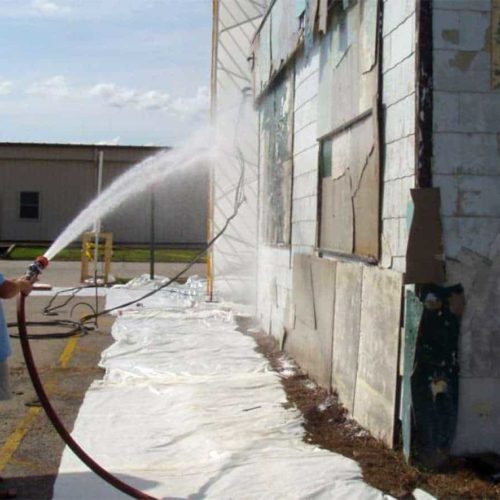Introduction
The Environmental Protection Agency has allowed the use of unapproved methods to demolish buildings containing asbestos, threatening public health and possibly violating worker safety rules, the EPA’s inspector general has concluded.
In an “early warning report” to EPA Administrator Lisa Jackson that speaks to the urgency of the matter, Inspector General Arthur A. Elkins Jr. noted that asbestos is a human carcinogen “with no safe level of exposure.” Nonetheless, Elkins found, the agency allowed its own employees and contract workers to be exposed to the toxic, fire-resistant mineral — widely used in buildings after World War II — during tests in Texas and Arkansas in 2006 and 2007.
Elkins said his office’s preliminary research showed that the unsafe demolition methods — designed to save time and money — have been used more recently at the Hanford Superfund Site near Richland, Wash., a former Department of Energy nuclear weapons production site, and are under consideration at a DOE-owned uranium enrichment facility in Paducah, Ky.
The EPA should “immediately and clearly communicate” to its various offices that only approved methods should be used during the demolition of asbestos-containing buildings, the IG said. The agency should retract all approvals — such as the one given at Hanford — that deviate from long-established practices designed to protect workers and the public from microscopic asbestos fibers, which can lodge in the lungs and cause cancer and other serious diseases, Elkins wrote.
The IG’s finding means that the EPA is “finally shutting down an experiment that was based on shoddy science,” said Jim Hecker, a lawyer at Public Justice, a public-interest law firm whose criticism dissuaded the EPA from using the shortcut at an abandoned motel in Fort Worth, Texas, in 2004. “For over seven years, [some EPA officials] have been pushing an asbestos removal method that endangers people and doesn’t work.”
The IG’s report “means that the alternative method is now dead,” Hecker said. “It’s been exposed for what it is, which is a dangerous method.”
In a memo to Elkins, EPA Deputy Administrator Bob Perciasepe wrote that the agency “has already begun to investigate the allegations of ongoing human-health threats from improper asbestos removal and disposal and … will take whatever steps are necessary to protect the health of anyone who might be exposed. Moreover, if there have been past incidents of exposure, the EPA will take appropriate steps to identify them and to address any health threats.”
Under a 1973 EPA rule, asbestos must be removed by specially trained technicians in protective gear before buildings are demolished, and meticulous efforts must be made to contain the fibers so they don’t leave the work site and threaten the public.
Beginning in 1999, the inspector general found, the EPA began studying alternative methods that were quicker and cheaper. During tests in Fort Worth and at Fort Chaffee, Ark., a former Army base, workers were given permission to circumvent the 1973 rule and demolish buildings with asbestos still in them, “potentially releasing asbestos fibers into the environment and endangering public health,” Elkins wrote.
The buildings were hosed down prior to demolition. But there is no evidence that this lessened the danger, the IG found: there were “demonstrated asbestos fiber releases” at both sites. In Fort Worth, where the test was performed on the office of an abandoned apartment complex, “people were living right across the street,” Hecker said. “That was the one that really ticked us off.”
Public Justice and an environmental group, the Natural Resources Defense Council, sought to expose the EPA’s own doubts about the so-called wet method of asbestos removal by filing a Freedom of Information Act request with the agency in June 2010. Unhappy with the EPA’s response, the groups sued earlier this year. Last month they obtained more than 26,000 pages of documents, one of which shows that respiratory protection requirements for workers weren’t met and warning signs weren’t posted, as required by the Occupational Safety and Health Administration.
An OSHA spokesman declined to comment.
Terry Lynch, international vice president of the International Association of Heat and Frost Insulators and Allied Workers union, said the EPA developed the unapproved demolition technique “to cut corners and save money” on urban renewal projects. An EPA document summarizing one of the Fort Chaffee tests concluded that the approved asbestos removal method was nearly twice as expensive as the wet method.
Read more in Environment
Environment
EPA rules threaten older, coal-fired power plants
Coal plants servicing more than 22M houses will be shut down, will likely raise electric bills
Environment
Mercury falling: Groundbreaking power plant emissions rule imminent
EPA rule would cap toxic pollution from utilities



Join the conversation
Show Comments